Where Do Sandhill Cranes Winter in a California Drought?
Move from Soda Lake to Pixley Has Been a Safe Harbor
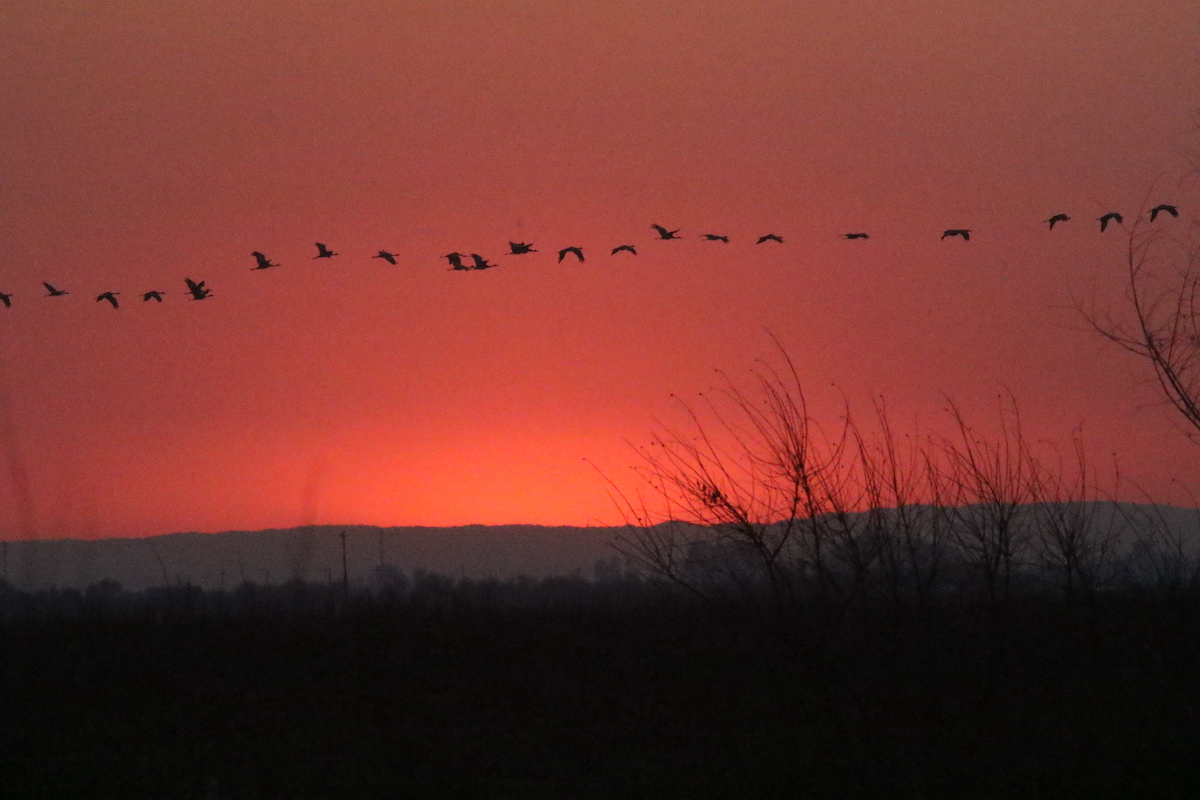
On the evening of January 2, 2022, a group from San Luis Obispo was ending a day of birding on the Carrizo Plain National Monument.
As usual, those semi-arid grasslands had produced a throng of raptors and other migratory songbirds, but their biggest prize didn’t reveal themselves until later. December 2021 was a wet month, with just enough rain to fill most of Soda Lake, a large alkali lake on the northern fringe of the national monument.
As the sun sank behind the Caliente Mountains to the west and shadows crept across the grasslands toward the Temblor Range, three sandhill cranes flew in and waded through the shallows of Soda Lake. Sandhill cranes hadn’t been documented on the Carrizo Plain since 2010.
I received an email the next day telling me about the unexpected sighting, and I immediately packed up my camera gear and binoculars and headed straight to Soda Lake hoping for a glimpse of these elegant, five-foot-tall, red-capped cranes.
Alkali Pipedream
Leading up to 2010, sandhill cranes, waterfowl, and throngs of shorebirds banked on Soda Lake as a winter stopover during their annual migration along the Pacific Flyway. However, following the winter of 2010, California sunk into a severe drought that lasted until February 2017, a solid seven years without water on the consistently parched Soda Lake. There’s been other wet winters since, 2019 and 2020 coming to mind, but inconsistent rain has forced sandhill cranes to search for reliable alternatives elsewhere during their annual migration. They breed and nest as far north as Siberia and as far south as Oregon. Once it cools, sandhill cranes fly south.
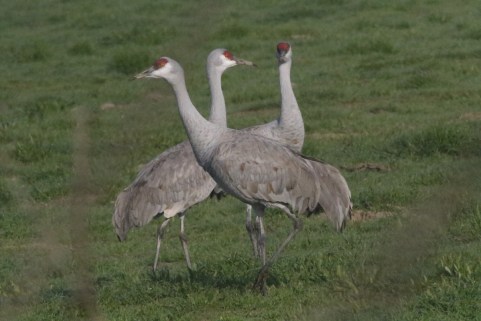
On the afternoon of January 3, I scoured Soda Lake and its salt-encrusted shoreline for any signs of these long-legged cranes. On several occasions, I thrashed through tangled saltbush concealing muddy shorelines not visible from Soda Lake Road. By late afternoon, with the sun sinking beyond the Calientes, I sat atop the Soda Lake Overlook, anticipating a couple of sandhill cranes flying in to display their impressive wingspans that can stretch six-and-half-feet wide.
It was another flawless sunset spanning across the Carrizo Plain, a pack of coyotes howling unseen in the background, and several pronghorn antelope sauntering eastward beyond Soda Lake. Unfortunately, no cranes were spotted, but my curiosity wandered. Where do sandhill cranes winter? It’s somewhere nearby on the southern edge of the San Joaquin Valley.
The Pixley Patchwork
It was barely light at the Pixley National Wildlife Refuge (NWF) several miles west of Highway 99, just north of Bakersfield, a region of California transformed by decades of agriculture. Yet, on a map, there are still some postage-stamp-sized habitats that are havens for wildlife. Pixley NWF is 6,939 acres, a remnant of marsh and grassland biome clinging to the San Joaquin Valley.
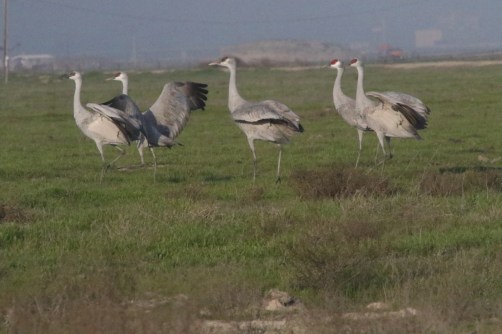
As soon as I left my truck, I could easily here the loud, rattling “kar-r-r-r- o-o-o” vocalizations carrying across the refuge cloaked in tule fog, the male and female sandhill cranes all trumpeting in unison. When the sun rose above the tule fog, there were hundreds upon hundreds of cranes lifting off, flying east/northeast just for the day to forage on grass and ag lands. Every day at sunset, they return to the wetlands to roost overnight in the shallow waters to avoid potential predators.
There’s an easy one-and-a-half-mile walk from the carpark to an overlook revealing the wetlands that are shared by thousands of waterfowl and shorebirds such as northern shovelers, killdeer, black-necked stilts, white-faced ibis, Canadian and snow geese, and American coots, but also close to 6,000 sandhill cranes!
A Reliable Alternative
“You here to see the sandhill cranes?” asked the bearded refuge worker. “This is the best place to see them in this region of the state.”
I told him about the recent report of a few cranes visiting Soda Lake on the Carrizo Plain back on January 2. He seemed surprised.
“Because there hasn’t been reliable water at Soda Lake since 2010,” he continued, “all the cranes that wintered on the Carrizo Plain come here.”
It all made sense. Water is life for so many species, and the ponds and wetlands at Pixley are fed by annual allocated waters thanks to the 1992 Central Valley Project Improvement Act. A well was drilled in 1994 supplying reliable, sufficient flow for 300 acres of seasonal wetlands.
“Wait until sunset when the cranes fly back from where they were feeding,” he said.
He was right. The sandhill cranes didn’t disappoint. In the late afternoon, I walked back out to the convenient overlook. I never saw another soul the entire day on the refuge, the incessant trumpeting of cranes never waning. Their rattling calls only increased as sunset approached, squadrons of them filling cool, crisp winter skies.
The search was over. The wintering pitstop of thousands of sandhill cranes revealed. A congregation surrounded in agriculture, but a sufficient migrant stopover for throngs of birds. Still, I’ll always keep an eye on Soda Lake in the hopes sandhill cranes rediscover that natural alkali basin.

Support the Santa Barbara Independent through a long-term or a single contribution.


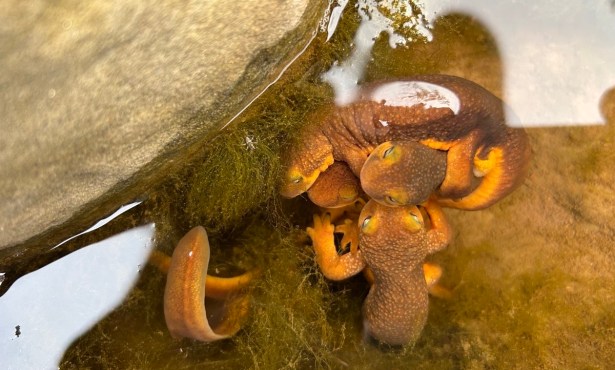
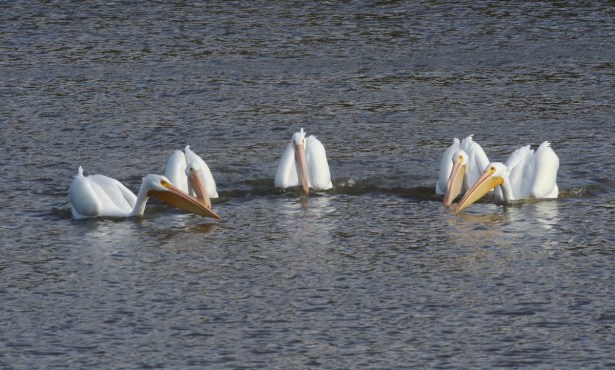
You must be logged in to post a comment.